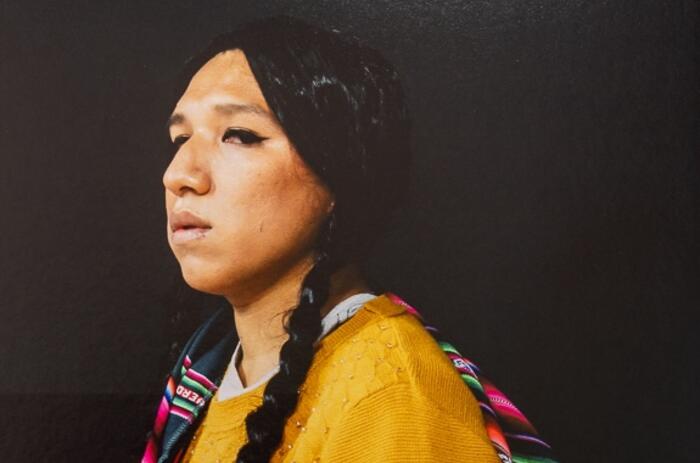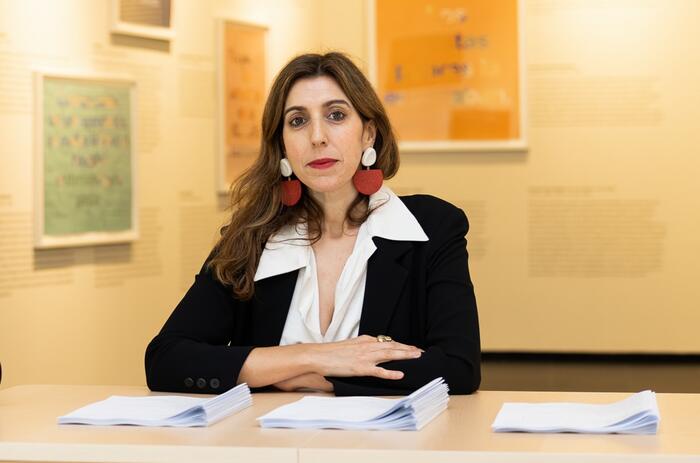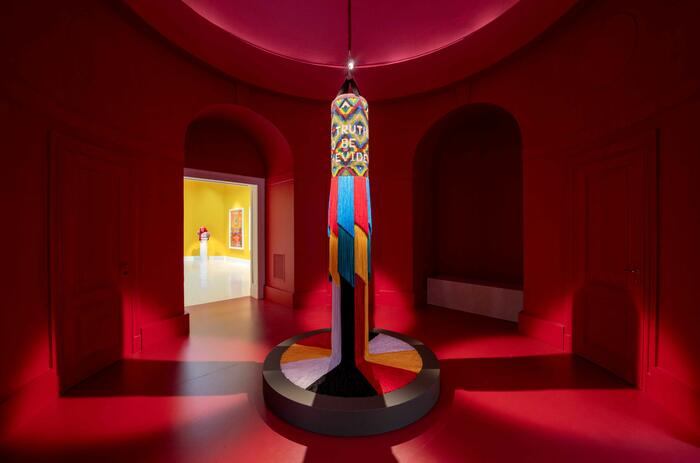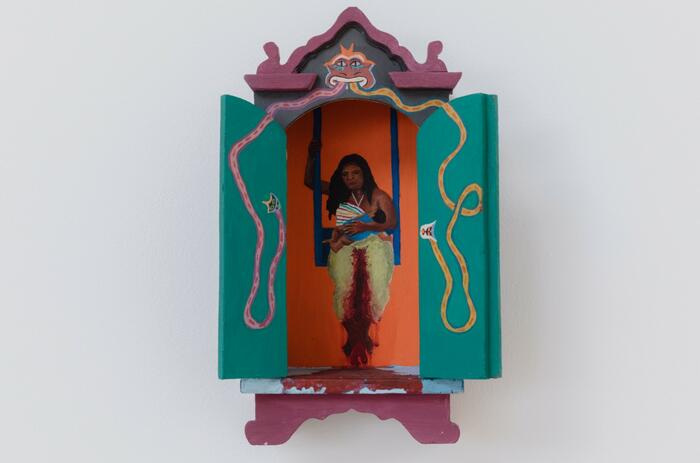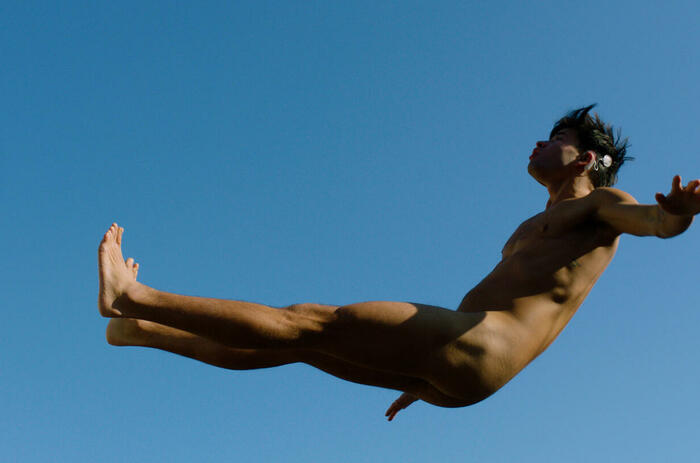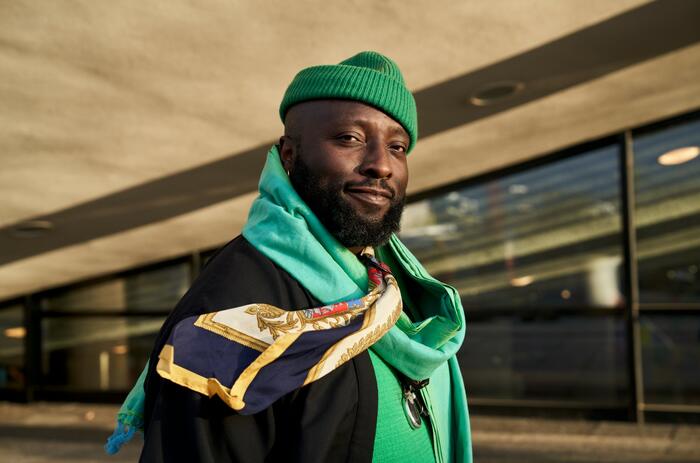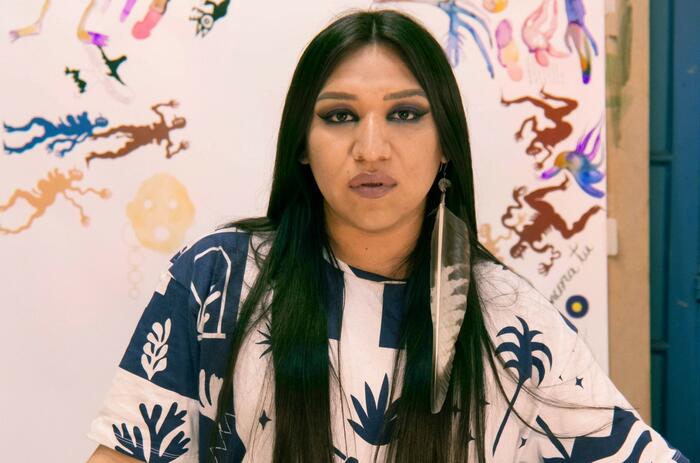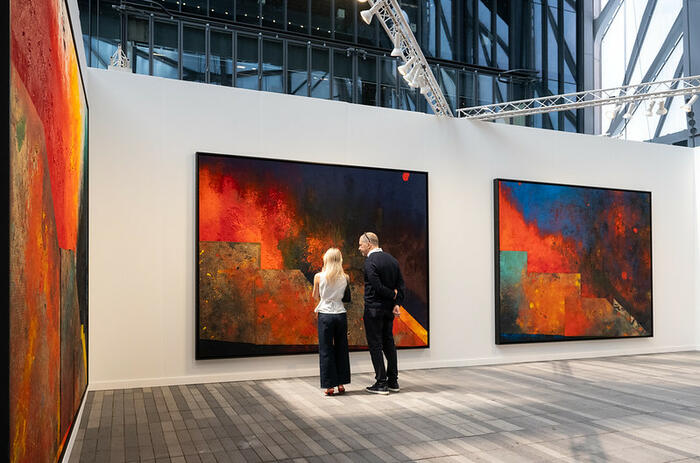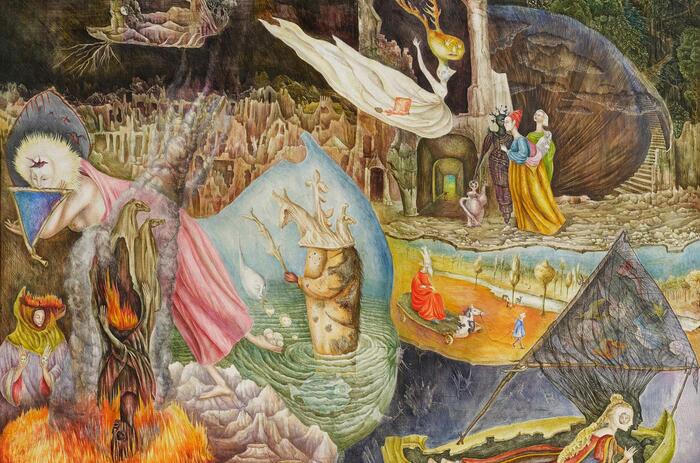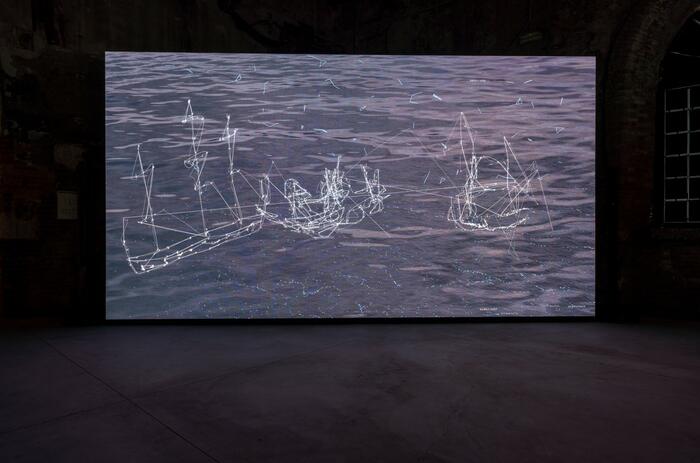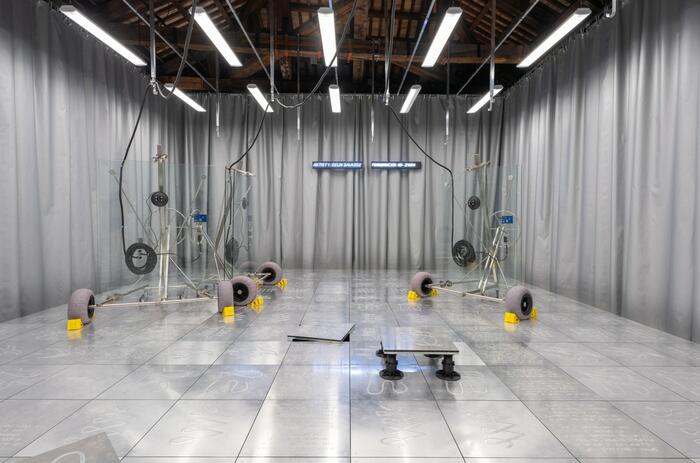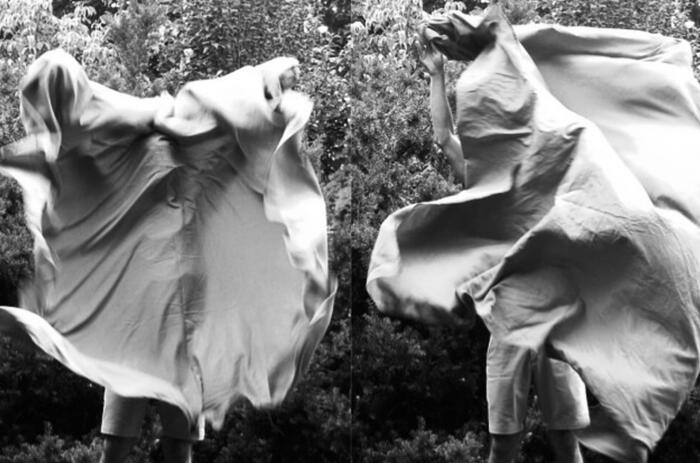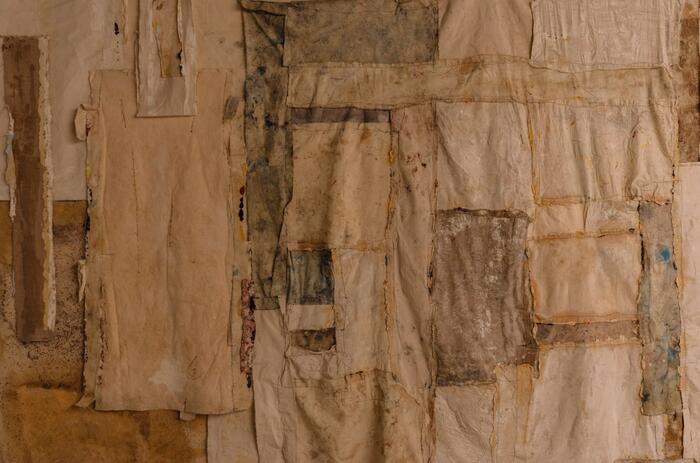JULIA ISÍDREZ AND THE GLOBAL SOUTH AT THE 60TH VENICE BIENNIAL
A week away from its official opening, the 60th edition of the Venice Biennale has generated press urbi et orbi. While some articles celebrated the irruption of the Global South in the Arsenale and the Giardini, others -truly devastating- reported on the disturbance and discomfort that the proposal of Adriano Pedrosa -the first Latin American to cure La Biennale in more than a century of existence- has awakened in the Western art system.
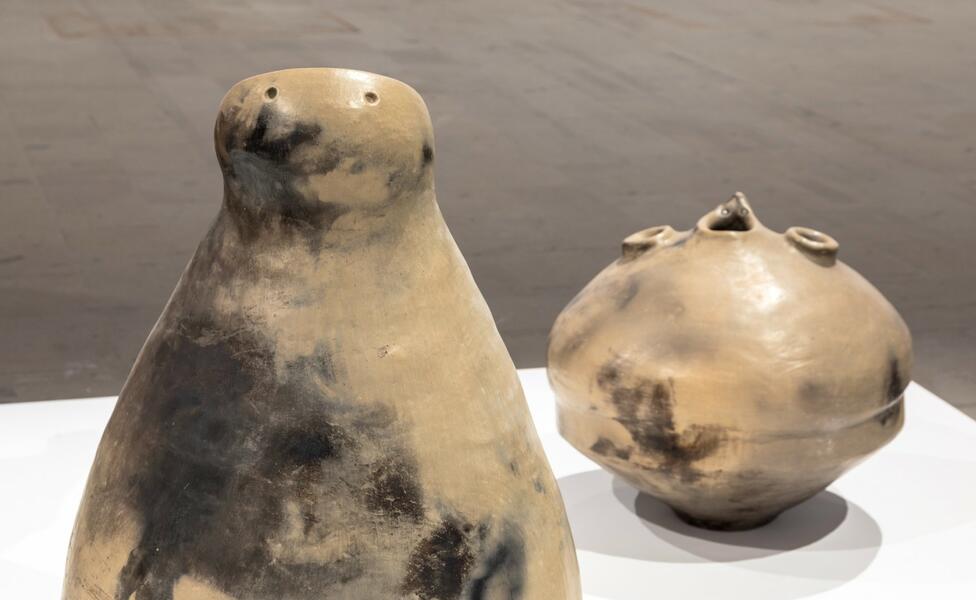
Getting to Venice is not easy, both literally and figuratively. The world's biggest art event -to which only Documenta disputes prominence- has been conceived this time as a “celebration of difference” that, by the way, can't escape the risk of exoticization that hovers over this edition in which 331 artists from all corners of the planet have been gathered under the title Stranieri Ovunque (Foreigners Everywhere), with 87 national pavilions and a number of parallel exhibitions and events.
It is a complex and comprehensive curatorial construction that can be seen as a “collection of marginalities”, an infinite sum of stories of exclusion and diaspora, of resistance and obstinacy, sometimes presented in a friendly format and sometimes in a conventional one. A transcultural, transdisciplinary, transsexual and open exhibition that plays with anachronism not only in its two historical cores and whose ambition to vindicate the immigrant, the foreigner, the queer and the indigenous ends up homologating diverse situations, practices and contexts.
The expression Foreigners everywhere has several meanings. “First, wherever you go and wherever you are, you will always find foreigners - they/we are everywhere. Secondly, no matter where you are, you are always truly, and at heart, a foreigner,” says the curator in his statement.
In this welter of diversity, the works of two Paraguayan folk ceramists are shown in a privileged place, the Arsenale di Venezia, as part of the main exhibition curated by Pedrosa. Almost at the beginning of the tour, in the center of one of the great enclosures, the pieces by Julia Isídrez and her mother, Juana Marta Rodas, share space with works from different latitudes. This is the first time that artists from Paraguay are part of the main exhibition by direct invitation of the curator.
Julia's participation was entirely articulated from private sources. The São Paulo gallery Gomide&Co -which represents the artist- took charge of the logistics for the transfer of the works and the Biennale assumed the costs of her presence in Venice. Paraguayan gallery owner Veronica Torres, who traveled with Julia, played an important role in the process from the beginning. Also relevant was the affective and professional support of Jorge Enciso, Julia's disciple, artist and lawyer.
Unlike Julia's large volumes (some are around 150 cm high), Juana Marta Rodas's pieces are small and belong to the collection of the CAV/Museo del Barro, in Asuncion, the institution that loaned them, in response to Pedrosa's request. Both, mother and daughter, have aroused interest in the international art circuit for some time now. It should be recalled that in 2012 works by both were present at Documenta 13, in the Rotunda of the Fridericianum Museum in Kassel, in friendly proximity to Brancusi's sculptures. And that several years earlier they had been awarded the Prince Claus Prize in Holland. It should also be noted that Aracy Amaral curated Isídrez exhibitions in Santiago de Chile and São Paulo, in collaboration with Osvaldo Salerno.
Although Julia's intense schedule in Venice, with interviews and meetings, contrasts with her days in Itá, where she has her home and a museum dedicated to her mother, her activity is always frenetic. It has always been, and today more than ever, with two international exhibitions coming up - one in New York and one in London - an upcoming biennial and the school she is building on a recently acquired piece of land, where she will teach classes and organize artistic residencies.
The image of Julia as a child, in the countryside, accompanying her mother very early in the winter to the place where Juana Marta extracted the clay for her works is well known. A long time has passed since then. So much, that the world, like her, has changed, although it is still the same. So much so that her pieces took on mythological, whimsical, fictional forms as they moved away from any utilitarian function. Julia's imaginary, like her mother's, was inexorably oriented to the territory of art and this patient and sometimes tiring navigation reaches today a coveted port with important stops along the way.
Hundreds of artists like Julia, unknown in the global art circuit and even in their own local scenes, who have never exhibited in this Biennial and perhaps not even in others, are a majority here. In fact, the long list of participants includes both individuals and collectives, many of whom never assumed themselves to be artists. Fresh works and ad hoc realizations coexist with pieces by disappeared artists or anonymous artifacts. The living mingle with the dead, at a ratio of 100 contemporaries to 200 historical ones, something that has never happened before. The curatorship aimed at revealing an “other” modernism, the one developed in and from the South.
No one doubts that this edition marks a turning point in the centennial biennial, both for the main exhibition displayed at Giardini and Arsenale, as well as for the national proposals, many of great quality and poetry. The most glamorous and seductive appointment of the global art scene, the one that triggers careers and quotations, has been invaded, contaminated, exceeded. The curator's decolonial vocation - perceptible in his impeccable previous proposals - takes on board the displaced of the world in an epic voyage that appeals to the shipwreck and may even evoke Le radeau de la Méduse.
However, and in the face of the sullen North-Atlantic gaze, here we are from the Global South - an expression that more than geographical coordinates indicate a political position -, all together, in this opportunity that may never be repeated. Yes, all of us together, mixed and even messy, the past and the future at the same table, putting furious colors to pain, weaving links like threads in a tapestry, disregarding canons and discovering each other. This biennial bears the mark of excess. And no wonder. More than two thirds of the world are here, exposing their conflicts, stories and fictions, or reflecting on their origins. That is why, at times, it is not only difficult to understand the narrative, but also to visualize the broad horizon that this overflowing edition poses. A discursive overflow that is announced from the very beginning in the iconic façade of the main pavilion of the Giardini -proudly displaying the logo of La Biennale- completely intervened by the Brazilian indigenous collective MAHKU (Movimento dos artistas Huni Kuin). A political gesture that could be naively interpreted as festive, folkloric or complacent, when in fact it is about human tragedy narrated in the visual codes of a culture.
-
Photo by Matteo DeMayda.
In an Italy shaken by nationalism and xenophobia, filling the Venice Biennale with “foreigners” and outsiders sounds even reckless. Pedrosa is encouraged. It is in this context that Julia Isidrez's work can be seen for what it is: a direct connection with life. This is how her cassava and coconut worms, her centipedes, her anteaters, her lobisons and the many hollows that shelter a corporal and sensitive memory of women of the people were born. A centuries-old wisdom transmitted from generation to generation.
Finally, the most frequently asked questions in recent days: Isn't this a biennial designed for spectators from the center? Doesn't it resemble a cabinet of curiosities or a fair of oddities? Beyond the criticisms, I think the biennial canon has been destabilized and that irritates. For a moment, this biennial turns the map upside down, as Torres Garcia did. Perhaps the most productive thing to do is to read it as a great book of the world, with an open spirit and without prejudices.

